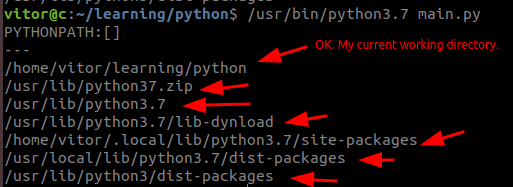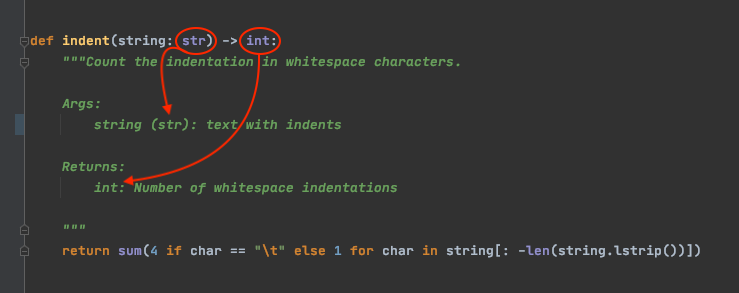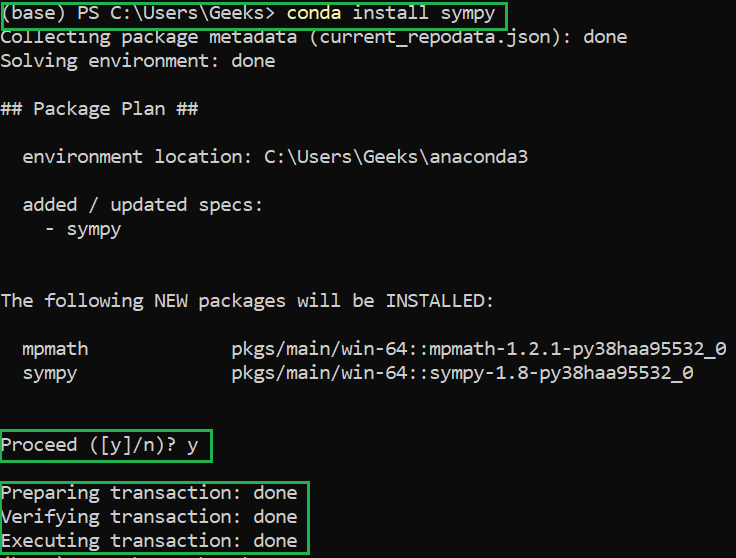What is the Python sys path?
What is the Python sys path?

The sys.path attribute in Python is a list of strings that specifies the directories in which Python looks for modules to import. This is often referred to as the "module search path" or "import path". When you try to import a module using the import statement, Python searches for it in the directories specified by sys.path. If the module is not found in any of these directories, Python raises an ImportError.

When you start a new Python session, the sys.path list contains a set of default directories. The exact contents of sys.path depend on your operating system and how Python was installed. For example:

sys.path typically includes: The directory where the current script is located (__file__.path) The /usr/lib/python3.x/site-packages/ directory (where x is the version number of your Python installation) The /usr/lib/python3.x/dist-packages/ directory On Windows, sys.path typically includes: The directory where the current script is located (__file__.path) The C:Python39Libsite-packages directory (where x is the version number of your Python installation) The C:Python39Libdist-packages directory
You can extend or modify the module search path by adding or modifying directories in sys.path. This can be done using various methods:
PYTHONPATH environment variable: You can set this environment variable to a list of directories that should be added to sys.path. For example, you could add the following line to your shell configuration file (e.g., .bashrc): export PYTHONPATH=$PYTHONPATH:/path/to/my/modules Using the -d command-line option: You can run Python with the -d option, which enables module loading from a specific directory. For example: python -d /path/to/my/modules myscript.py Programmatically modifying sys.path: In your Python script, you can modify sys.path using the sys.path.insert() or sys.path.remove() functions.
When you modify sys.path, Python searches for modules in these directories in addition to the default directories. This allows you to easily manage a set of custom modules that are not part of the standard library. For example, you might add a directory containing custom modules used by your application, or a directory containing third-party libraries that you have installed.
In summary, sys.path is a critical aspect of Python's import mechanism. By controlling this list, you can customize the locations where Python looks for modules to import, making it easier to manage your code and dependencies.
What is the meaning of SYS in Python?

I'd be happy to explain!
In Python, SYS refers to the standard streams that allow you to interact with your program from outside. There are three types of standard streams: stdin, stdout, and stderr. Let's break each one down:
stdin (Standard Input): This stream is used to read input from the user, such as when you're working in an interactive shell or terminal. It's typically connected to the keyboard, allowing you to provide input to your program. stdout (Standard Output): As its name suggests, this stream is used for outputting information to the console or a file. When you print something using print(), it usually goes to stdout. This stream can be connected to various devices like the screen, printer, or even a file. stderr (Standard Error): If your program encounters an error or warning, Python uses stderr to write the message to the console. It's typically connected to the same device as stdout, but with different priority. In other words, if you're writing to both streams simultaneously, stdout takes precedence.
These standard streams are crucial in Python programming because they provide a way for your program to communicate with the outside world and respond to user input or errors. Here are some examples of how you might work with SYS:
stdin: input() function or sys.stdin.readline() Write to stdout: print() function or sys.stdout.write() Write to stderr: print() function with the file=sys.stderr argument
Understanding how SYS works is vital for any Python developer, as it enables you to create robust programs that can interact with users effectively.





























